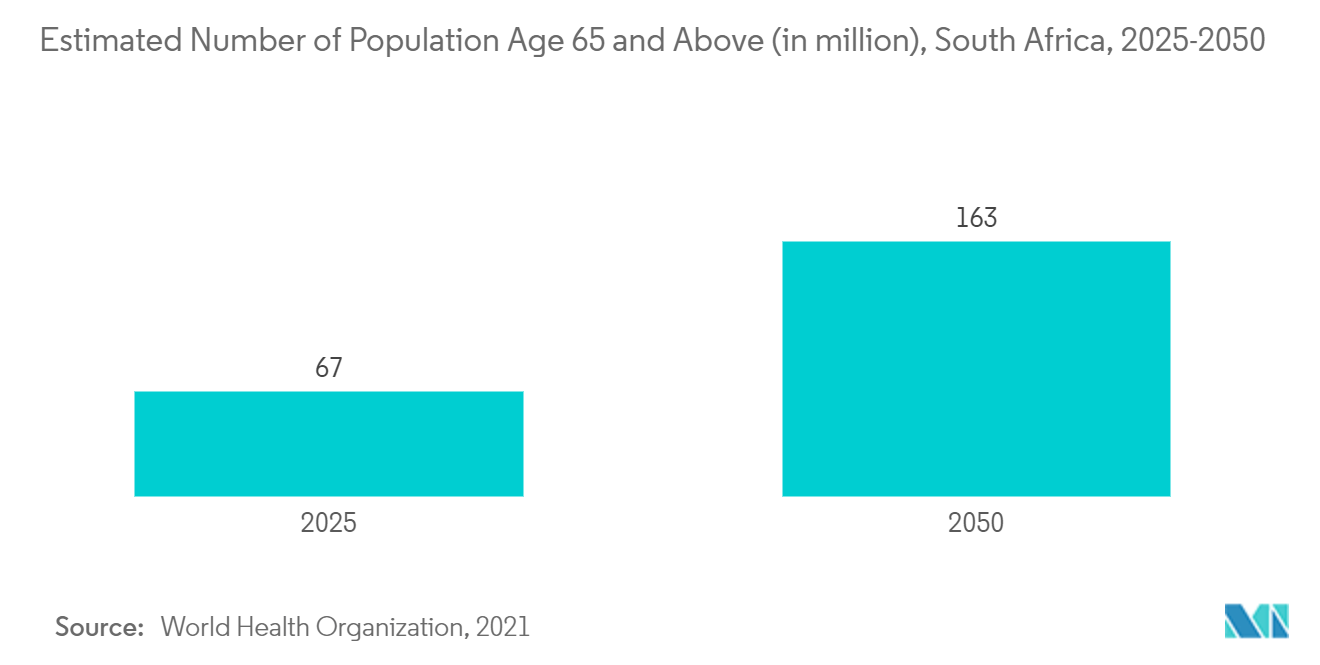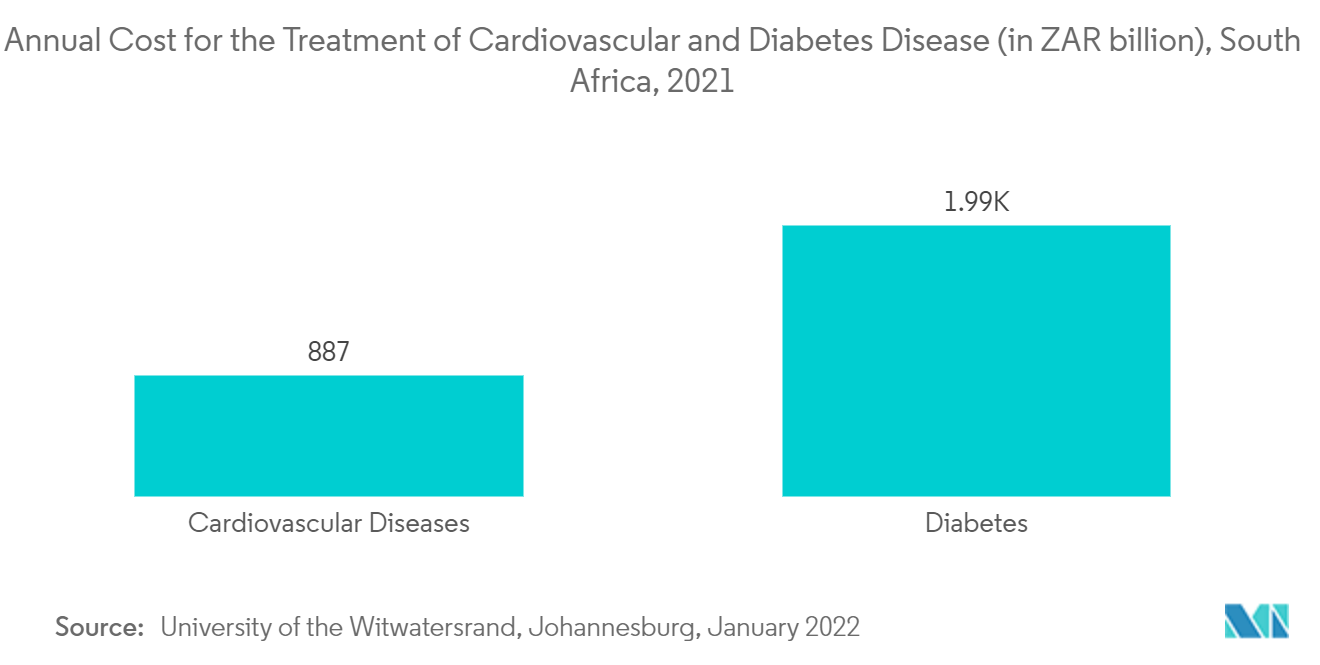Market Trends of South Africa Cardiovascular Devices Industry
This section covers the major market trends shaping the South Africa Cardiovascular Devices Market according to our research experts:
Cardiac Rhythm Management Device Segment is Expected to Show Better Growth in the Forecast Years
Cardiac rhythm management is a part of electrophysiology used to manage heart functioning. The segment's high growth attributes to the rising burden of cardiovascular diseases, sedentary lifestyles, and an increasingly aging population. In recent years, heart rhythm problems (arrhythmias) have become prevalent and will rise further. Cardiovascular disorders, such as arrhythmias, stroke, and high blood pressure, are increasing the demand for cardiac rhythm management devices. Hence, these factors will positively impact the studied market in the forecast period.
According to the article published by South African Health Review in October 2021, South Africa's population is estimated to be 57.3 million in 2021. 8.3% of whom are aged over 60 years, and the number of older adults in South Africa will increase to 15.4% of the total population by 2050. The geriatric population is more prone to cardiovascular diseases, and the growth of this population in the country is likely to support the segment's growth over the forecast period.
Moreover, the rising healthcare spending and the number of hospitals are more likely to support the target market's expansion in the country. For instance, in April 2022, the Netcare Property Holdings Joint Venture opened a 400-bed multi-specialty hospital in South Africa. Thus, such hospital expansion in South Africa will create opportunities for cardiovascular devices, fuelling market growth.
Thus, all the factors mentioned above, such as the growing geriatric population, are expected to boost segment growth over the forecast period.

Cardiac Assist Devices is Expected to Hold a Significant Market Share Over the Forecast Period
Cardiac assist devices are mechanical pumps to help persons with weak or failing hearts maintain cardiac function and blood flow. The device is implanted in the body and circulates blood from the heart's lower chambers to the rest of the body. Increasing sedentary lifestyle adoption and unhealthy food habits have led to increased cardiovascular disorders occurrence. Moreover, the increasing incidence of cardiovascular diseases will support the segment's growth over the forecast period.
According to the study published in the Journal of Cardiovascular Diseases and Development in August 2022, the implantation of an LVAD causes a rapid and considerable decrease in GDF-15 concentrations in individuals with advanced HF. As a result, assessing GDF-15 plasma concentrations after LVAD installation could aid in monitoring therapeutic response. Thus, the advantages of the assisting devices will boost the market over the forecast period.
The various strategies adopted by the key market players, such as product launches, mergers, and acquisitions, partnerships, are respected to boost the market over the forecast period. For instance, in June 2021, in South Africa, Netcare Hospitals performed the first procedure to insert a tiny device known as the Abbot HeartMate 3 LVAD left ventricular assist device. Doctors can use this device for advanced heart failure patients needing short or long-term mechanical circulatory support. Thus, increasing the adoption of CHF treatment devices in the country is further expected to boost the studied market's growth during the forecast period.
Moreover, increasing spending on cardiovascular diseases will further propel the market's growth over the forecast period. Thus, all factors mentioned above, such as the benefits of assisting devices in managing cardiac diseases and product launches by market players, are expected to boost the market over the forecast period.


